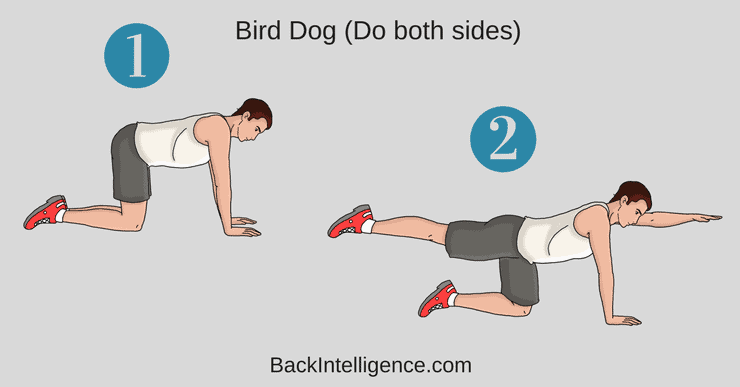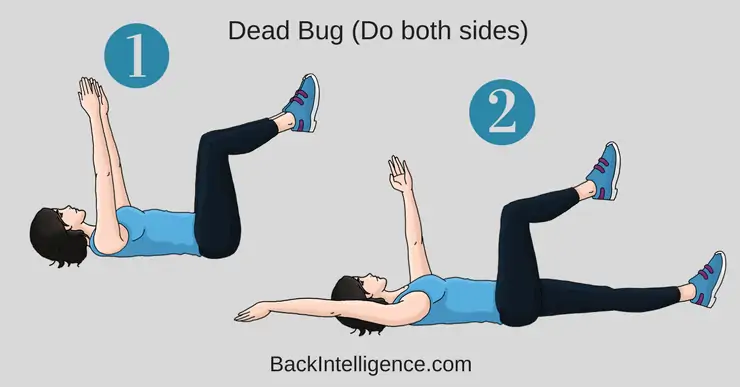
There are a variety of causes for back pain and two common ones we see are people who are either hypomobile or hypermobile.
People who are hypomobile have restricted mobility. They have tighter joints and less range of motion.
– These folks need more mobility/movement work.
Hypermobile people, on the other hand, have extreme flexibility or can push their bodies and their joints through extreme ranges of motion.
– These folks need more stability and strengthening.
In this article we are going to focus on Hypermobile individuals.
Quick note about how Hypermobility can develop
Growing up, most likely these folks did a lot of dance, gymnastics, sports or exercises where they pushed their bodies through extreme ranges of motion. Overtime they developed flexibility and very mobile joints.
3 Exercises for Hypermobility
The solution for hypermobility is stability, so we’re going share some basic stability exercises to help improve pain caused by hypermobility. If you gain enough stability through exercising, your pain should begin to decrease.
The following look like very simple exercises, but the key to performing them is that everything is locked down in the truck. Also, don’t burn through the exercises and do them completely wrong, which we see all the time. Instead do them slowly and methodically, paying attention to your posture and form.
Exercise #1: Bird Dog
This is a great exercise to improve core strength and lumbar back muscles.
How to do it:
– Begin on your hands and knees, with your hands positioned under your shoulders and knees positioned under your hips.
– Brace (contract) your core as hard as you can before beginning any movement.
– While bracing your core, raise your left arm and reach it forwards until it is aligned with your torso; at the same time, kick your right leg backwards until is it aligned with your torso.
– It’s important to not arch your low back as you do this.
– Hold this position for 2-3 seconds before slowly returning to the starting position.
– Repeat with your right arm and left leg.
– Alternate sides for 10 repetitions.
** Only extend your arm and leg to where it’s comfortable and don’t arch your low back.
Exercise #2: Dead Bug
This exercise helps to increase deep core strength, and it also helps to improve hip and trunk stability.
How to do it:
– Begin lying on your back with both arms extended towards the ceiling.
– Lift your legs off the floor to 90 degrees.
– Exhale to bring your ribcage down and try to flatten your back onto the floor by rotating your pelvis upwards and bracing your core muscles (this is the starting position for this exercise that you need to hold throughout the movement).
– Start the exercise by extending your left leg, straightening at the knee and hip and bringing the leg down to just above the floor (don’t let your lower back arch); at the same time, lower your right arm back to just above the floor.
– Keep your abdominal and gluteal muscles tightened and return your left leg and right arm to the starting position.
– Repeat with your right leg and left arm.
– Alternate sides for 20 repetitions.
Exercise #3: Glute Bridge
This exercise helps to strengthen both your core, gluteal and back muscles.
How to do it:
Begin lying on your back on the floor with your knees bent and feet positioned flat on the floor with your arms positioned beside your torso.
– Brace your core and squeeze your butt before any movement.
– While bracing, lift your butt off the floor, and continue squeezing your butt.
– Hold this position for 5 seconds and return slowly to the starting position.
– Aim for 10 repetitions.
**Don’t hyperextend during this movement, you should feel your glutes firing.
These exercises may seem simple, but simple is where it’s at when it comes to stability. Let’s bring it back to basics, start to stabilize the core, work on your pelvis, work on your hips, and watch your pain dissipate.
To learn how to do each of these exercises more in depth, check out the video below:
Related:
Dead Bug Core Exercise – 3 Progressions
6 Exercises to strengthen lower back and core muscles
Glute Bridge Exercise – Strengthen your butt muscles
Kneeling Hip Flexor Stretch – Video by Chiropractor
7 Hip Hinge Exercises
Dr. Oliver has been practicing in Massachusetts since 2007. He is a graduate of Marist College where he received a Pre-Med Bachelor of Science degree in Biology. Dr. Oliver then went on to pursue his chiropractic career by attending Palmer College of Chiropractic West, where he graduated Cum Laude. Dr. Oliver has his diploma in rehabilitation, which allows him to combine rehab and corrective exercise with traditional chiropractic treatment. This gives his patients better long term results.




